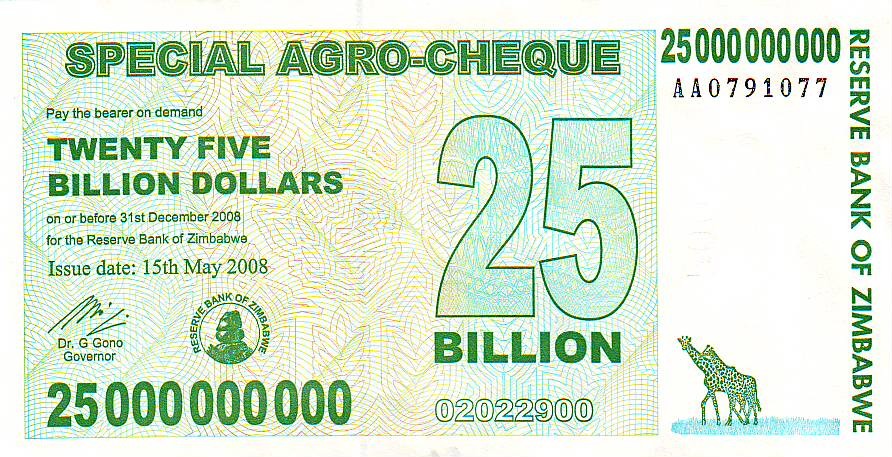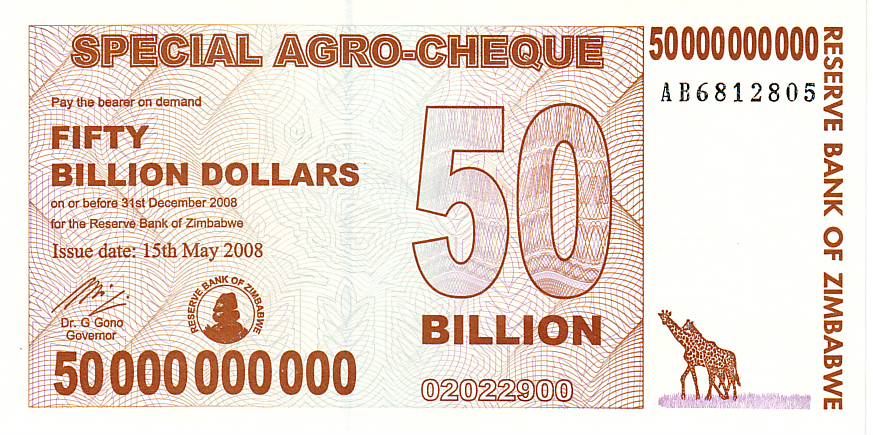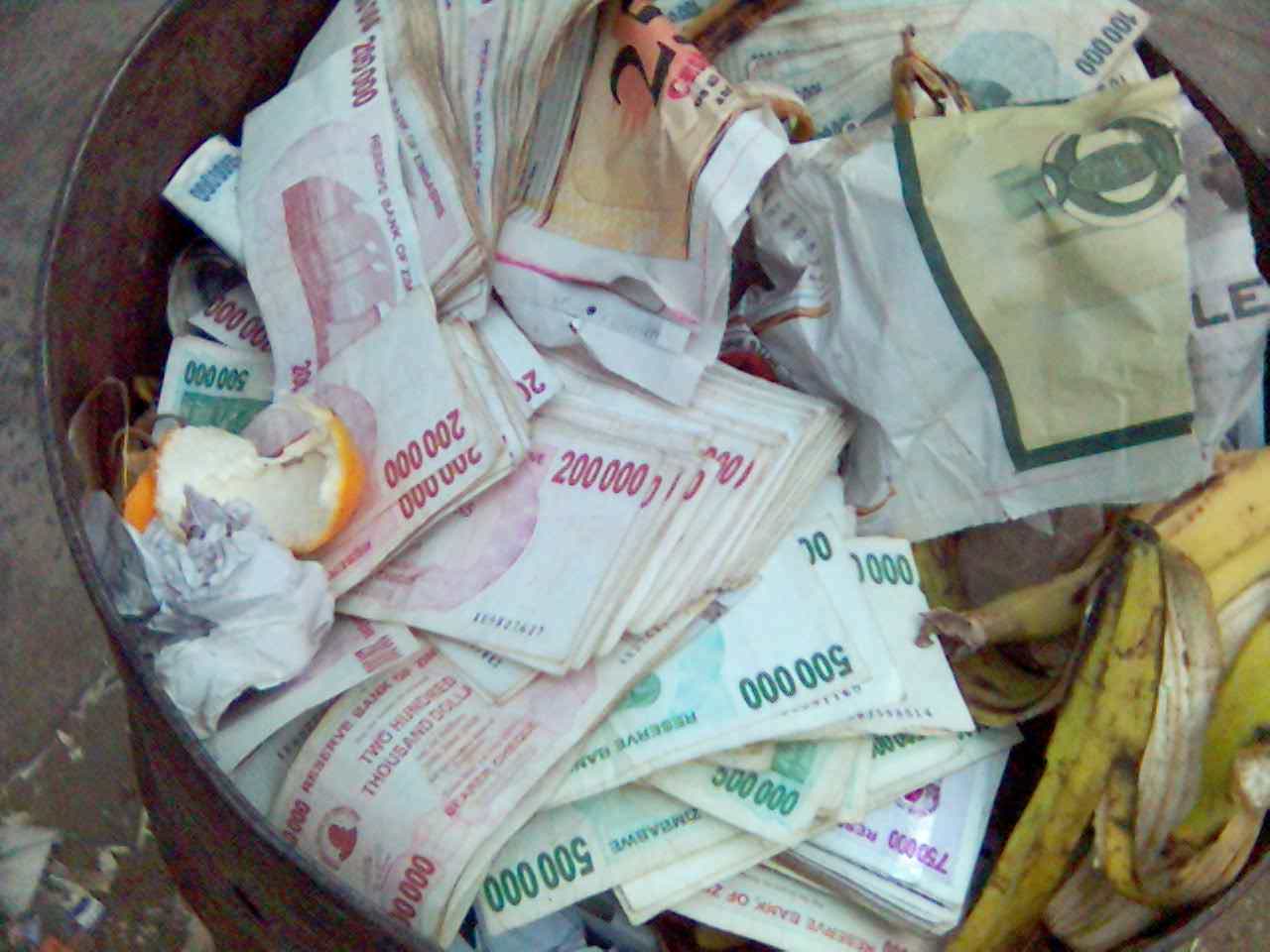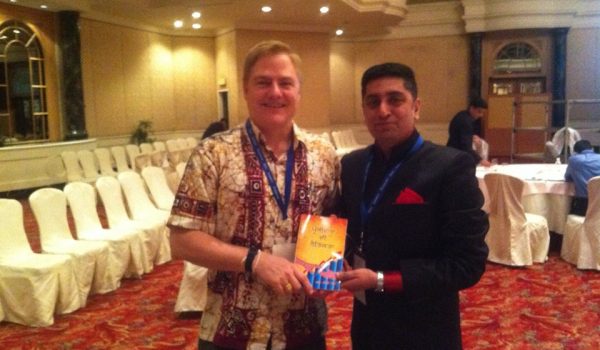When you create this

and this

and get this

I saw something similar in Belgrade during the hyper inflation they experienced under Milosevic. Mounds and mounds of soggy paper notes in “wishing wells,” as people tossed in big handfuls of nearly worthless notes of high denomination. But even that hyper inflation has been greatly surpassed by the astonishing hyper inflation in Zimbabwe, which seems to have attained the status of all-time record for currency depreciation through inflation. [Note correction from Slavisa in the notes.]
Note the expiration dates on the new “Special Agro-Cheques”: “Pay to the bearer on demand twenty five billion dollars on or before 31st December 2008”










Actually Milosevic still beats Mugabe. In December 1993 alone, the monthly inflation in Serbia was 313 million percent (the monthly inflation, not the annual inflation for that month). The total in 1993 was a few hundered quadrilion percent!
What they did in practice was getting rid of zeros on banknotes by decrees, so a thousand dinar bill would become one dinar, and so on. Several times like that. And also printing ever bigger banknotes, so that in the end the biggest one was 5 hundred billion dinar. That looked like: 500,000,000,000 dinar written on a banknote. And it was still worth nothing by next week.
Hi, Slavisa,
You’re right. I forgot about the “Zeroes” issue, which was presented as a monetary reform at the time. I was in a Belgrade hotel once and overheard the clerk and a French guest arguing about the bill (was it equivalent of $50 a a night, or $500?) when I left for breakfast. They were still arguing when I got back, but the clerk finally relented and admitted that the guest was right, and he was charging ten times too much. (It seemed tht it was an honest mistake, too.) The new 100 dinar and old 100,000 dinar notes were identical, except for the zeroes. And you’re right, they started inflating again right away.
What a sorry competition for Zimbabwe to be in.
It seems like the U.S. gov’t does a similar thing with debt. I mean, does anyone REALLY think we will ever eliminate the federal debt of trillions? Would America be any better if the debts were all due? But people believe in it because it isn’t ‘seen’ like paper money with zeros on it. The only reason people lend the gov’t money is that the aggregate interest and occasional payoffs are enough to enjoy the financier’s life. And people think that Catholic priests and sweatshops are the worst child abusers. They don’t know the half of it.
Monetary inflation in the US is a bad thing, to be sure, and a dishonest way to finance government spending. But a few percent a year (although that does add up and compound over time) is not nearly as destructive as inflation of a million or more percent per year.
Zimbabwe’s inflation (and inflation in the US) is a good argument for bringing back the gold standard. There is no requirement, economically speaking, to increase the supply of money. Either over the long term or the short term. All it means is the government is stealing from present holders of the currency.